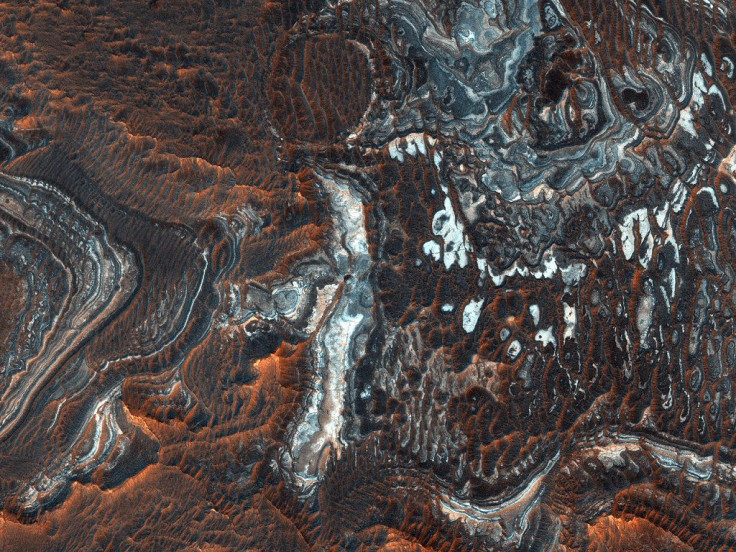NASA MRO Photo Shows Off Mars’ Diverse Terrains

KEY POINTS
- A photo captured by the MRO shows Mars's diverse terrain
- The features of NASA's terrains were caused by various natural forces
- It is not yet clear how layers of Martian canyons were formed
A photo captured by NASA’s Mars Reconnaissance Orbiter (MRO) highlighted the diverse features and characteristics of the Martian terrain. According to the MRO team, the various features may have been caused by a variety of environmental factors.
The image was captured using MRO’s High Resolution Imaging Experiment (HiRISE) camera. It features the various plains across the Southwestern Juventae Chasma, a canyon located in the massive Valles Marineris system on the Red Planet.
As explained by the HiRISE team from the University of Arizona, the upper part of the image features plains that contain ridge features known as inverted stream channels, which were once low-lying areas that ascended.
According to the scientists, these kinds of features may have been formed by various natural occurrences on Mars. One of these includes the presence of precipitating minerals that could cause the materials lining the streambed to harden.
“There are several possible reasons why channels might stand out in inverted relief,” the team explained in a statement. “The streambed material may become cemented by precipating minerals, contain larger rocks, or become filled with lava, all which are more resistant to erosion.”
As for the bottom half of the image, the HiRISE team noted that this portion is covered by plains that have eroded. The erosion, which was caused by natural forces on Mars, created layers with light and dark tones, creating a unique terrain with contrasting colors.
According to the scientists, this region spans about a kilometer across. Although these kinds of layers are common features of the canyons on Mars, the natural process that led to their formation is not yet known.
“Another example of erosion can be seen in the next terrain which covers about 2/3 of the bottom half of the image,” the team explained. “Erosion has exposed a beautiful series of light and dark tone layers (approximately 1 kilometer across). In the cutout, the smallest of the rings is the deepest exposed layer.”
“Layers are common in the Martian canyons, but it is unknown what process formed them,” the scientists added. “It is likely that the layers in the plains here are made of the same material as the layer in the canyons.”
© Copyright IBTimes 2024. All rights reserved.





















